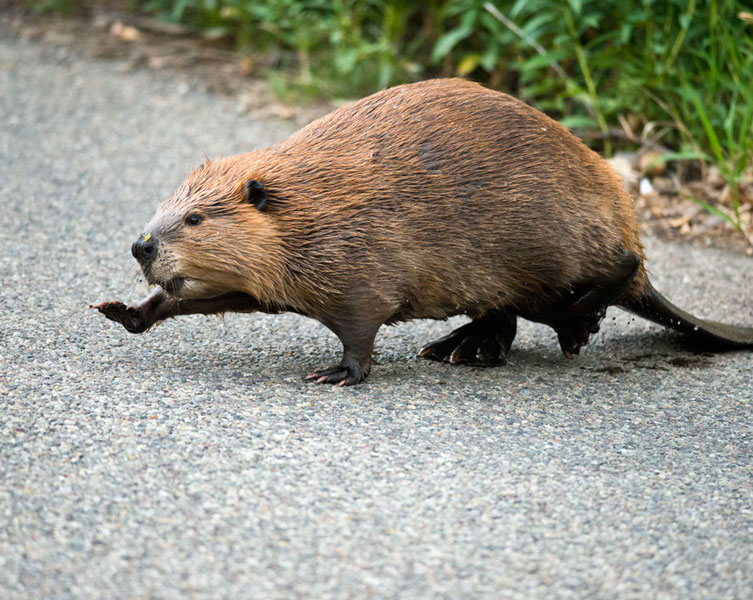The ecological importance of beavers cannot be overstated. These industrious and adaptable animals play a crucial role in shaping and maintaining healthy ecosystems. In this article, we will provide a detailed description of the ecological importance of beavers, including their habitat engineering capabilities, water management, biodiversity conservation, and impacts on carbon storage.

Habitat Engineering Capabilities
Beavers are known as nature’s engineers due to their ability to modify their environment to create ideal habitats for themselves and other species. They construct dams made of sticks, mud, and stones, which create ponds and wetlands. These structures serve as protective shelters for beavers and provide numerous benefits to the surrounding ecosystem.
The dams built by beavers create a network of interconnected water bodies, which helps regulate water flow and maintain water availability in streams and rivers. By slowing down the flow of water, they reduce erosion and flooding downstream, and recharge groundwater aquifers. The creation of ponds and wetlands also increases water retention, especially during dry periods, thereby ensuring water availability for various species.
Water Management
One of the most significant contributions of beavers to ecosystems is their ability to manage water resources effectively. The dams and ponds they create act as natural reservoirs, storing water during periods of high precipitation and releasing it slowly during dry seasons. This regulation of water flow helps to prevent both droughts and flooding events, benefiting both aquatic and terrestrial organisms.
The presence of beaver ponds also enhances water quality. The slow-moving water in these ponds allows sediment and pollutants to settle, leading to improved water clarity. Additionally, the ponds provide habitat for beneficial bacteria and filter out excess nutrients, reducing the risk of algal blooms and improving overall water quality.

Biodiversity Conservation
Beavers have a profound impact on biodiversity conservation. The wetlands created by their activities provide valuable habitats for a wide range of species, including fish, amphibians, reptiles, birds, mammals, and countless invertebrates. These wetlands offer breeding grounds, nesting sites, and foraging opportunities for many species, contributing to enhanced biodiversity and ecological resilience.
The flooded areas behind beaver dams create diverse aquatic habitats, including shallow areas, deeper pools, and submerged vegetation. These habitats support a variety of aquatic organisms, such as fish and amphibians, which rely on these environments for feeding, reproduction, and shelter. Additionally, the slow-moving water and abundant vegetation attract a rich array of invertebrates, providing a crucial food source for many other organisms.
The wetlands created by beavers also support numerous bird species, including waterfowl, wading birds, and songbirds. These habitats offer nesting sites, food resources, and shelter, contributing to the breeding success and survival of various avian species. Additionally, the presence of beavers and their dams can create a mosaic of different habitats, such as open water, marshes, and wooded areas, which further enhances biodiversity.
Impacts on Carbon Storage
Beavers also have a significant impact on carbon storage in ecosystems. The creation of wetlands through their dam-building activities leads to the accumulation of organic matter, including plant debris and sediments, in the ponds. This organic matter, which is rich in carbon, becomes trapped in the wetland soils.
The carbon stored in these wetlands plays a crucial role in mitigating climate change by removing carbon dioxide from the atmosphere. Wetland soils have high carbon sequestration potential, as the waterlogged conditions inhibit the decomposition of organic material. This carbon storage not only helps to reduce greenhouse gas emissions but also contributes to the overall health and fertility of wetland ecosystems.
Furthermore, the wetland habitats created by beavers provide ideal conditions for the growth of vegetation, including trees, shrubs, and aquatic plants. These plants absorb carbon dioxide during photosynthesis and store carbon in their biomass, further contributing to carbon sequestration and overall carbon storage in the ecosystem.

In conclusion, beavers are truly remarkable creatures with immense ecological importance. Their habitat engineering capabilities, water management skills, and impacts on biodiversity conservation and carbon storage make them integral to the functioning of healthy ecosystems. By creating ponds and wetlands, beavers improve water quality, regulate water flow, provide critical habitats for numerous species, and contribute to carbon sequestration. Recognizing and valuing the ecological role of beavers is essential for their conservation and the preservation of the ecosystems they inhabit.